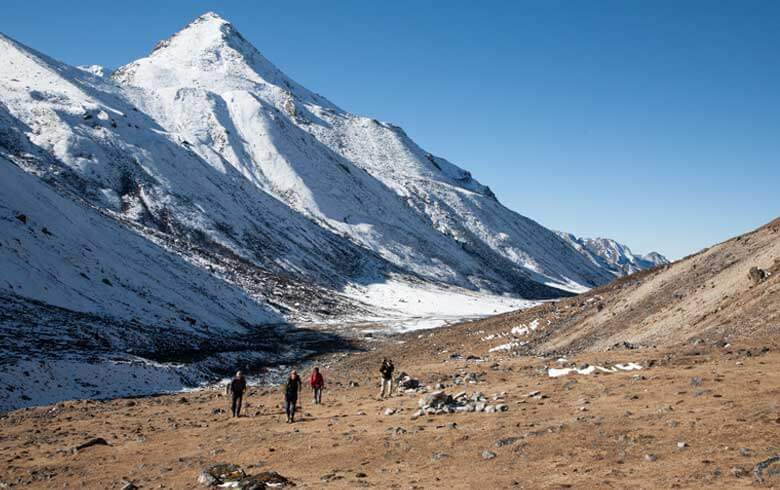
Kanchenjunga Trek is one of the most famous trekking journeys in Nepal. Every year thousands of trekkers come to Nepal to try Kanchenjunga Trek. Kanchenjunga Trek route is a part of a restricted area. So, to trek in the Kanchenjunga region, you need to be accompanied by a local guide and at least 2 trekkers. Without them, it’s tough to obtain necessary permits or entry passes to trek on the Kanchenjunga Circuit Trek route. It’s a rule enforced by the government. Though there are many others activities to do in Nepal like jungle safari, rafting, bird watching, etc., most people prefer to go for trekking while visiting Nepal.
Kanchenjunga Base Camp Trek is not as popular as Everest Base Camp Trek or Annapurna Base Camp Trek. This means that it is not as crowded and is quite remote. So you can truly experience wilderness, and remote Nepali cultures, food, and lifestyle in its traditional form while trekking in the Kanchenjunga area. Kanchenjunga trek is a tea-house cum camp trek.
Tea-house trek is a kind of trek where the trekkers depend on tea houses for accommodation and food. Tea houses are small lodges, offering basic accommodation and food facilities. Going on a tea house trek on the Kanchenjunga Trek route is more comfortable than camping trek.
The eastern part of Nepal was not affected as much by the earthquake that occurred in the year 2015 compared to the western and central regions. It has been declared a safe to travel region. Moreover, the trails have not been obstructed and the landscape is also in a good condition. The mountains stand tall for the trekkers to view its magnificent beauty. The most favorable seasons for trekking in Nepal are autumn (September-November) and spring (March-May).
Kanchenjunga Trek Itinerary
Kanchenjunga Trek is an amalgamation of Kanchenjunga North Base Camp Trek and Kanchenjunga South Base Camp trek. As made clear by the definition, during the trip, the trekkers get to explore both the north and south base camps. Altogether, it’s a 26 days long trip. During this time, the trekkers cover places such as Ghunsa, Pangpema, Ramche, and so on.
The highest point of the trek is 5143 m. The trek starts from Taplejung, and ends at Khanigaun. All these villages that the trekkers explore during the journey are situated in the lap of the mountains. They are gifted with beauty. From these places, and numerous points on the route, you get to enjoy the most amazing mountain views.
Interesting Facts About Kanchenjunga Region
Kanchenjunga Trek lies in the extreme northeastern part of Nepal in Taplejung district. The trek region covers an area of 2035 sq. km, and it borders Sankhrict to the west, the Indian state of Sikkim in the east, and Tibet in the north. The Kanchenjunga Conservation Area, which consists of the entire trek route, was declared as ‘Gift to the Earth’ as a part of WWF’s Living Planet Campaign, and later made a conservation Area in 1997 by the Nepal Government.
Kanchenjunga Trek is also included in Sacred Himalayan Landscape (SHL) group, as a result of the support received from numerous international organizations like Department of National Parks and Wildlife Conservation (DNPWC), World Wildlife Fund for Nature Conservation (WWF), and International Center for Integrated Mountain Development (ICIMOD).
Globally threatened species like Wood Snipe (Gallina Gonemoricola) and Saker Falcon (Falco Cherru), near-threatened Satyr Tragopan (Tragopan Satyra), Spiny Babbler (Turdoides nipalensis), which is endemic to Nepal, and many other internationally threatened species of birds and animals are found in Kanchenjunga Conservation Area.
The trekkers need to cross a certain elevation to reach them. Also, globally threatened mammals like the Snow Leopard (Uncia Uncial), Himalayan Musk Deer (Moschuschrysogaster), Himalayan Black Bear (Ursusthibetanus), Red Panda (Ailurusfulgens), Dhole (Cuon Alpines) and so on are found here.